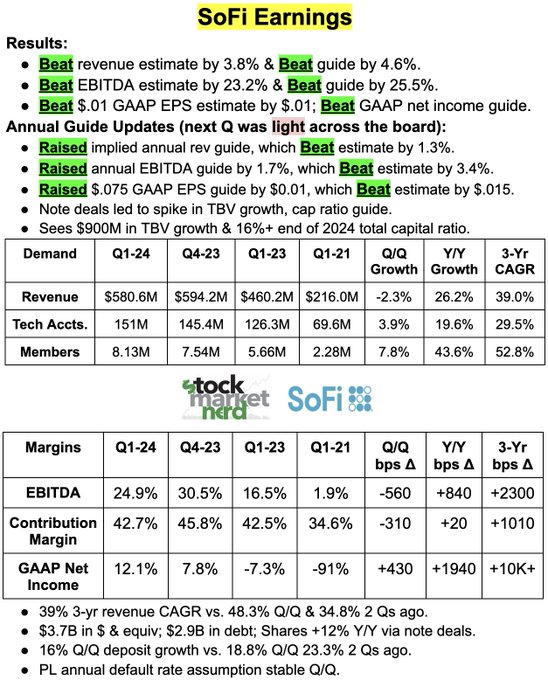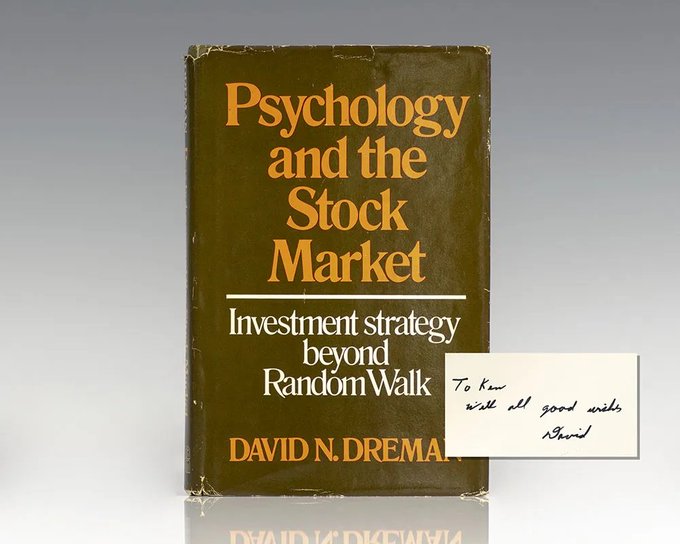Its pretty amazing to see. Revolut ads are starting to take over an airport near you. These positions used to be controlled by HSBC, but it really does feel like the world is changing in banking – and we are finally getting a good product.



Tech, Business, Finance and Everything Else
Its pretty amazing to see. Revolut ads are starting to take over an airport near you. These positions used to be controlled by HSBC, but it really does feel like the world is changing in banking – and we are finally getting a good product.



SoftBank has invested $2 billion in Intel.
SoftBank Group Chairman and CEO Masayoshi Son said in a statement that the “strategic investment reflects our belief that advanced semiconductor manufacturing and supply will further expand in the United States, with Intel playing a critical role.”
This is mixed with the US Government also announcing that they will take a 10% stake in Intel.
Based on the search results, I can provide the following comparison of XIACF’s current price to its 52-week high and low:
The 52-week range for XIACF (Xiaomi Corp Class B) stock is $1.40 – $2.64.
As of the most recent data available:
Comparing these figures:
This indicates that XIACF is currently trading at its highest point over the past year, suggesting strong recent performance or positive market sentiment towards the stock.
The other day I just came across Amit on YouTube and noticed that he sat down and interviewed Robinhood CEO and Co-Founder, Vlad Tenev.
It’s a great interview and really worth the watch.
My favourite part is them talking about the new Robinhood Gold and the economics behind the product.
90% of VCs add no value to startups, 70% even harm them.
Just the fact that you got an MBA and joined a venture fund doesn’t mean you can give useful advice to an entrepreneur
If you never built an actual business, you’re not qualified to give advice.
Vinod Khosla is the lead of Khosla Ventures and has invested in some of the worlds largest companies when they were young and in venture capital mode.
Here is the full interview:

Here is a quick run down the SoFi results this quarter.
From the outside it looks like they had a very strong quarter with 26.2% growth in terms of revenues and members are very strong at 43% up year on year.
However, the stock itself is a crazy rise and very hard to predict how it is going to perform over the short term.
Buying Xiaomi American Depositary Receipts (ADRs):
Buying Xiaomi shares directly on the Hong Kong Stock Exchange (HKEX):
The News: Online brokerage Webull is planning to go public via a $7.3 billion merger with a special purpose acquisition company (SPAC), after previous initial public offering (IPO) attempts were unsuccessful, partly due to its past crypto offerings.
Details: The New York-based company, which launched its trading platform in the U.S. in 2018, has agreed to merge with SK Growth Opportunities Corp. The company plans to start trading on the Nasdaq in the second half of 2024, giving Webull an estimated enterprise value of roughly $7.3 billion.
Webull’s U.S. CEO, Anthony Denier, stated that the company’s previous attempts to IPO were hindered by its cryptocurrency trading offerings, a practice the SEC has frowned upon. To eliminate this regulatory uncertainty and clear the path for its public listing, Webull sold its crypto asset business in late 2023.
Why SPAC?: Denier explained that the SPAC route provides a more certain valuation upfront compared to a traditional IPO. The blank-check deal is expected to raise approximately $100 million for Webull, which it intends to use for international expansion and new product development.
Webull experienced significant growth during the pandemic, with registered users reaching 20 million worldwide. The company has targeted more active traders than competitors like Robinhood, offering tools for technical analysis.
It’s important to note that this impending public listing occurs as fintechs proceed cautiously due to increased regulatory scrutiny of companies with ties to China. Despite early backing from Chinese tech giants Xiaomi and Alibaba, Denier emphasized that Webull is not majority-owned by Chinese entities.
Dividend investing can be considered better than standard long-term investing for capital growth returns due to several reasons:
It’s important to note that the choice between dividend investing and standard long-term investing depends on individual preferences, risk tolerance, and investment goals. Both approaches have their advantages and drawbacks, and it’s essential to consider one’s specific financial situation before making investment decisions.
Investors seeking reliable income and potential capital appreciation often turn to dividend-paying funds. Fidelity Investments, a renowned financial services company, offers a range of funds that provide regular dividend payouts. Here’s a step-by-step guide on how to find Fidelity funds with dividends:
Remember, investing in dividend-paying funds involves risks, including the potential for fluctuations in market value and changes in dividend payments. Conduct thorough research and consider your own investment objectives before making any investment decisions.
Fidelity offers a wide range of funds with dividends, catering to varying investment preferences and risk appetites. By following the steps outlined above, you can find Fidelity funds that align with your investment goals and provide a steady stream of income through dividends.
Here are 5 MUST-read Books on Psychology and Decision-Making:
1. Rationality by Steven Pinker

2. Psychology and the Stock Market by David Dreman
A classic from 1977. One of the first books to explain the relationship between psychology and investing.

3. Thinking, Fast and Slow by Daniel Kahneman
The bible of human decision-making covering all sorts of Biases, Heuristics, and Decision-Making Flaws.

4. The Art of Thinking Clearly by Ralf Dobelli
We lose track of the essential things and focus on unimportant shiny news all the time. Learn how to avoid that.

5. Think Again by Adam Grant
You’ll make mistakes in investing. It’s important to recognise them early. This book teaches you how to pursue reconsideration and question your existing beliefs.

In 1983, Warren Buffett wrote down 13 owner-related business principles outlining Berkshire Hathaway’s approach to investing and business management. These principles, which remain relevant today, provide a framework for making sound decisions that prioritize long-term shareholder value.
This principle emphasizes the importance of diversification to reduce risk and the pursuit of businesses that can generate consistent and sustainable profits.
Buffett advocates for a long-term focus, prioritizing decisions that enhance the intrinsic value of the company over short-term financial gains.
Financial prudence is essential, and excessive debt can hinder a company’s flexibility and ability to withstand economic downturns.
Effective management is crucial, and aligning the interests of management with those of shareholders ensures long-term value creation.
Acquisitions should be driven by strategic opportunities that enhance the overall value of Berkshire Hathaway.
Disciplined valuation is paramount, and acquiring businesses at inflated prices can erode shareholder value.
Investing requires patience and discipline, and rushing into decisions can lead to suboptimal outcomes.
Transparency and clear communication foster trust and confidence among shareholders.
Berkshire Hathaway views shareholders as partners in its success, aligning its actions with their interests.
Sound investment decisions are based on rational analysis, not emotional impulses.
The stock market should be used as a means to acquire ownership in valuable businesses, not as a venue for speculative trading.
Market fluctuations can be unpredictable, and investors should focus on the long-term intrinsic value of businesses.
Every decision should be evaluated based on its impact on the company’s long-term value and its ability to deliver superior returns to shareholders.
These 13 owner-related business principles provide valuable insights into Warren Buffett’s investment philosophy and Berkshire Hathaway’s approach to business. By adhering to these principles, investors can make informed decisions that prioritize long-term value creation and sustainable financial success.
Value investing is a timeless investment strategy that has been used by some of the most successful investors in history, including Warren Buffett. Value investors look for stocks that are trading below their intrinsic value, with the belief that these stocks will eventually revert to their fair market value and provide a profit for investors.
This ebook is designed to introduce new investors to the basics of value investing. It will cover the following topics:
What is Value Investing?
Value investing is an investment strategy that involves buying stocks that are trading below their intrinsic value. Intrinsic value is the true worth of a stock, based on its underlying fundamentals.
Value investors believe that the stock market is often irrational and that stock prices can fluctuate wildly, even when the underlying fundamentals of a company remain strong. This can create opportunities for value investors to buy stocks at a discount to their intrinsic value.
The History of Value Investing
The history of value investing can be traced back to Benjamin Graham, who is considered the father of value investing. Graham was a professor at Columbia University and a successful investor. He wrote a number of books on value investing, including The Intelligent Investor and Security Analysis.
Graham’s teachings were popularized by his student, Warren Buffett. Buffett is one of the most successful investors in history, and he has used value investing principles to generate billions of dollars in wealth for himself and his shareholders.
The Principles of Value Investing
The principles of value investing are simple, but they can be difficult to apply in practice. The following are some of the key principles of value investing:
How to Identify Undervalued Stocks
There are a number of ways to identify undervalued stocks. One common method is to look at a company’s financial statements and valuation ratios.
Value investors typically look for stocks with strong financial statements and low valuation ratios. For example, value investors may look for stocks with a low price-to-earnings ratio (P/E ratio) or a high dividend yield.
How to Construct a Value Investing Portfolio
Once you have identified a number of undervalued stocks, you need to construct a value investing portfolio. This involves diversifying your investments across a variety of sectors and industries. It also involves managing your risk by investing in a variety of stocks with different valuation ratios.
Common Mistakes to Avoid When Value Investing
There are a number of common mistakes that investors make when value investing. Some of the most common mistakes include:
Conclusion
Value investing is a time-tested investment strategy that has been used by some of the most successful investors in history. By following the principles of value investing, new investors can position themselves for long-term success.
Additional Resources
If you are interested in learning more about value investing, here are a few additional resources:
Spotify’s A class and B class shares differ in two key ways:
Other than these two differences, Class A and Class B shares have the same rights and obligations. This means that they receive the same dividends and have the same right to participate in any liquidations or distributions.
Michael Cannon-Brookes owns approximately 109.44 million Class B shares and 381,836 Class A shares of Atlassian. This represents approximately 43.08% of Atlassian’s outstanding Class B and Class A ordinary shares, taken together, and approximately 87.91% of the voting power.
In other words, Cannon-Brookes owns about 22% of Atlassian’s total shares, but he has control over about 88% of the company’s voting power. This is because Class B shares have ten times the voting power of Class A shares.
Cannon-Brookes is the co-founder and co-CEO of Atlassian, and he is one of the richest people in Australia. His net worth is estimated to be around $13 billion.
(as at May 2022)
Analysts have a wide range of price targets for Nu Holdings in the next 12 months. The median price target is $7.85, with a high of $11.00 and a low of $4.00.
Here is a breakdown of the price targets from a few different analysts:
These price targets reflect the analysts’ view of Nu Holdings’ growth prospects and valuation. The median price target of $7.85 suggests that analysts believe Nu Holdings is fairly valued at its current price. However, the high price target of $11.00 suggests that some analysts believe the company has the potential to grow significantly in the future.
NuBank (Nu Holdings) is pushing the banking industry in Brazil, Mexico and Colombia.
I have been wanting to invest in NuBank for some time, but I have thought for the past year or so – that their market cap has become so large that they are simply just un-investable at these levels.
To prove this was the case I thought I would do a very simple side by side comparison with a legacy bank that is predominantly in key markets.
| Metric | Nu Holdings | Barclays |
|---|---|---|
| Assets Under Management | $10.2B | $2.3T |
| Number of Customers | 30M | 48M |
| Revenues | $1.2B | $25.4B |
| EBITDA | $-78M | $9.3B |
| Countries | 3 | 50 |
| Market Cap | $35 billion | $28 billion |
I know NuBank is in 3 emerging markets – with at least 200 million people in those countries that are currently unbanked. However, even if NuBank was able to have 100 million customers – expand their product lines and then start to really focus on other markets – do you think they can really grow to the AUM or sheer network size of Barclays?
Or is this a perfect short sell position?
No, Atlassian never raised any primary funding. The company was founded in 2002 by Mike Cannon-Brookes and Scott Farquhar, who bootstrapped the company with their own savings. Atlassian went public in 2015, and it has been profitable ever since.
Here are some of the reasons why Atlassian never raised primary funding:
Atlassian’s decision to not raise primary funding has been a major factor in its success. The company has been able to maintain its independence and focus on its long-term goals. It has also been able to avoid the dilution of its ownership that often comes with venture capital funding.
I posted this on Twitter, but thought I would also share on here as it really showed the difference between private investing and public investing.
Some companies that have market caps less than the total money they have raised:
• Bird ($120M mkt cap vs $1.2B raised)
• Wish ($810M mkt cap vs $2.9B raised)
• WeWork ($2.8B mkt cap vs $16.2B raised)
• Lyft ($5.1B mkt cap vs $7.3B raised)
There are so many investment “gurus” on YouTube and it simply just feels like this is now a step above a used car salesman!
Here is a very good example – Investment Advice! When he simply just adds his money into a very basic Vanguard ETF based off the S&P500.
This is probably as far as it gets from someone who should actually be giving investment advice!
What you really should be watching is video interviews from Warren Buffett – and then also spending a huge amount of time reading and working out your own way to value companies and their intrinsic value.